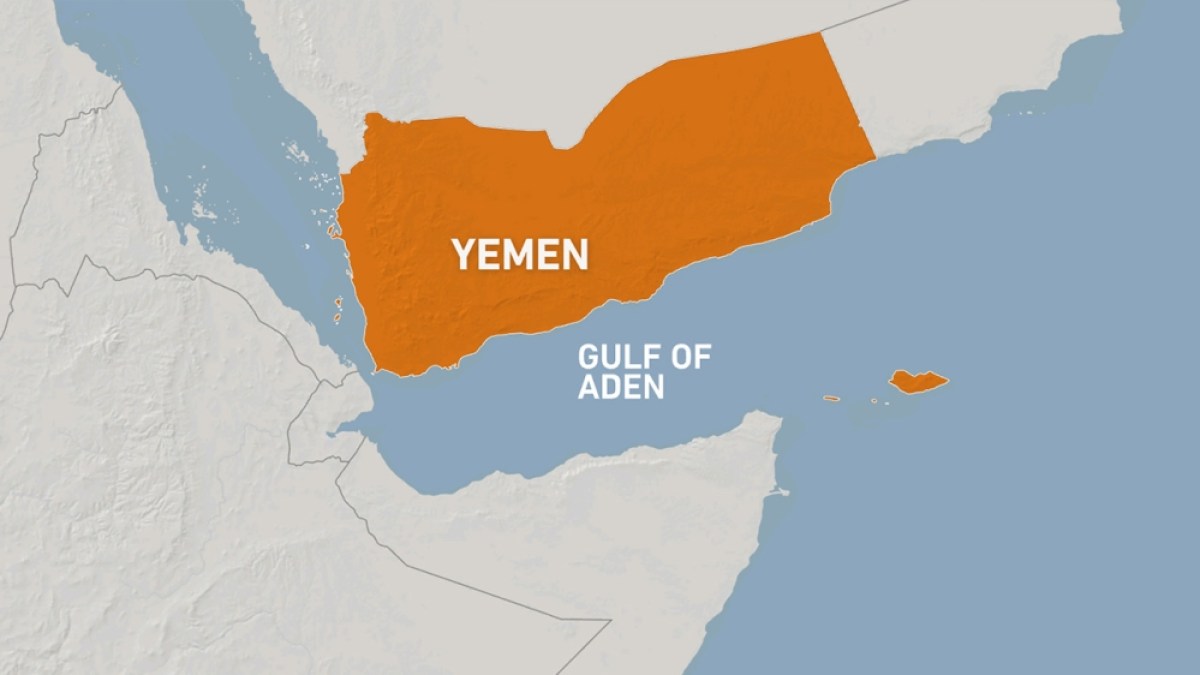The Indian military launched multiple missile attacks targeting sites in Pakistan and Pakistan-administered Kashmir early on Wednesday in an attack it called Operation Sindoor. The Pakistani military claims to have retaliated, shooting down multiple Indian military planes.
At least 26 Pakistanis have been killed in the six targeted cities, according to Lieutenant Ahmed Sharif Chaudhry, the director general of the Inter-Services Public Relations (ISPR) media wing of Pakistan’s military. India says it struck nine sites.
But what’s the significance of the cities and sites that India attacked? And what are India and Pakistan saying about those strikes? And why did India launch these attacks in the first place?
Why did India strike Pakistan?
The missiles were India’s response to the deadly April 22 attack on tourists in Indian-administered Kashmir in Pahalgam, during which 26 men were killed.
An armed group called The Resistance Front (TRF), which demands independence for Kashmir, claimed responsibility for the Pahalgam attack. India claims that the TRF is an offshoot of Pakistan-based armed group, the Lashkar-e-Taiba (LeT). Islamabad has denied its involvement in the Pahalgam attack and has asked for a neutral investigation into the incident.
However, since the attack, India has suspended its participation in the Indus Waters Treaty that Pakistan relies on for its water supply. Pakistan has responded by threatening to suspend its participation in the Simla Agreement, a pact signed in 1972 following the Indo-Pakistan War. Both countries have also scaled back their diplomatic ties, and each has expelled the other’s citizens.
How has India justified the attacks?
India claims it hit “terrorist infrastructure”, targeting organisations including the LeT and Jaish-e-Muhammad (JeM), an armed group based in Pakistan which claimed responsibility for a suicide bombing in February 2019, which killed 40 Indian paramilitary soldiers in Pulwama in Indian-administered Kashmir.
In a briefing on Wednesday, Indian Foreign Secretary Vikram Misri insisted that the missile strikes “focused on dismantling the terrorist infrastructure and disabling terrorists likely to be sent across to India”.
Joining Misri in the briefing, Indian military officials Colonel Sofiya Qureshi and Wing Commander Vyomika Singh detailed the operation. Five of the nine sites that India hit, they said, were in Pakistan-administered Kashmir. The remaining four were in Punjab – in Bahawalpur, Muridke, Shakar Garh and a village near Sialkot.
During the briefing, the Indian military showed a map marking out what it claimed were 21 “terrorist camps” in Pakistan and Pakistan-administered Kashmir. Al Jazeera has not been able to independently verify the claims of either the Indian or Pakistani militaries.
 The map shown by the Indian military during a media briefing on Wednesday [Priyanshu Singh/Reuters]
The map shown by the Indian military during a media briefing on Wednesday [Priyanshu Singh/Reuters]What has Pakistan said about the sites attacked?
Chaudhry of the ISPR described the Indian strikes as an “unprovoked attack, targeting innocent people”. He indicated that India had launched a total of 24 strikes across six locations in Pakistan and Pakistan-administered Kashmir.
Chaudhry said at least 26 civilians, including women and children, had been killed, and at least 46 people were injured. He claimed mosques and residential areas were targeted, killing and injuring civilians.

What’s the significance of the sites targeted by India?
The Indian missile strikes represent the most extensive attacks on Pakistani soil outside the four wars that the nuclear-armed neighbours have fought. They also mark the first time since the war of 1971 that India has attacked Punjab, Pakistan’s most populated province and historical and economic hub.
Unlike previous aerial attacks by India in Pakistan or in Pakistan-administered Kashmir, some of these strikes targeted large population centres. Muridke is next to Lahore, Pakistan’s second-most populous city. Sialkot and Bahawalpur are major cities, too.
But many of the sites chosen as targets by India also hold specific strategic importance, at least from New Delhi’s perspective. Here’s a breakdown:
Muridke, Punjab
Muridke is a city in Punjab’s Sheikhupura District, peppered with totems of historical memory from the Mughal, Mauryan and Gupta eras.
Chaudhry said a mosque named Masjid Ummul Qura was targeted with four strikes. One man was killed and one man was injured as a result. Two people have been missing from this location, Chaudhry said, adding that surrounding residential quarters have also been damaged in these attacks.
But the town, according to India and much of the international community, also hosts the headquarters of the Jamat-ud-Dawa, a charity organisation that New Delhi insists is a front for the LeT.
On Wednesday, India’s Qureshi claimed that Indian missiles struck the LeT’s Markaz Taiba camp in Muridke. The Indian army claimed that key perpetrators of the 2008 Mumbai attack – including Ajmal Kasab, the sole gunman who was captured alive after that assault on India’s financial capital – were trained at that camp.
Meanwhile, images emerging from Muridke showed rescuers searching for victims amid the debris of a damaged government health and education complex.
Bahawalpur, Punjab
Chaudhry said that four Indian missiles struck Ahmedpur Sharqia, a town near Bahawalpur, targeting a mosque named Masjid Subhan, which was destroyed in the attack. He said that at least five people were killed in the attack, including two men, two women, and a three-year-old girl. Additionally, he said, 31 people were injured – 25 men and six women. He added that four “residential quarters”, where civilian families were living, were damaged.
But Qureshi said India had hit the headquarters of the JeM, called Markaz Subhanallah. India described the site as a hub for “recruitment, training and indoctrination”.
Muzaffarabad, Pakistan-administered Kashmir
Muzaffarabad is the capital city of Pakistan-administered Kashmir, located at the confluence of the Jhelum and Neelum rivers. Muzaffarabad is sustained by its cottage industry ecosystem, including furniture making, wood carving, garment making and embroidery work, according to the State Bank of Pakistan.
Chaudhry said that a mosque called Masjid e Bilal was hit in Muzaffarabad, and a “young girl was injured”.
But Qureshi said India hit a LeT training centre, Sawai Nala camp in Muzaffarabad, 30km (19 miles) away from the Line of Control (LoC), the de facto border that separates Indian-administered and Pakistan-administered Kashmir. She claimed that those responsible for multiple attacks, including the April 22 Pahalgam killings, were trained at this camp.
The Indian military officials also said they attacked a Jaish-e-Muhammad “staging area”, the Syedna Bilal camp in Muzaffarabad. A staging area refers to a place where people, vehicles and equipment are assembled and readied before being assigned a mission.
Kotli, Pakistan-administered Kashmir
Kotli is a city along the Poonch river and is an agricultural and tourist hub.
Chaudhry said a mosque named Masjid Abbas was targeted in Kotli. A 16-year-old girl and an 18-year-old boy were killed. At least two other people were injured, he added.
Qureshi, however, said that India hit a LeT base, Gulpur camp, about 30km (19 miles) away from the LoC. The Indian army added that it also struck what it called the Abbas camp in Kotli, 13km (8 miles) away from the LoC, where Qureshi said up to 15 “terrorists” could be trained at a time.
Qureshi said India has also hit Mehmoona Joya, which she described as a facility of the Hizbul Mujahideen (HuM), a rebel group based in Indian-administered Kashmir. The HuM was founded by separatist leader Muhammad Ahsan Dar in September 1989, with a pro-Pakistan ideology, calling for India to leave the parts of Kashmir that it administers.
Bhimber, Pakistan-administered Kashmir
Qureshi claimed India struck what India called the Barnala camp in Bhimber, about 9km (5.6 miles) away from the LoC. She claimed that fighters were trained in using weapons, improvised explosive devices (IEDs) and in jungle survival at this camp.
Pakistani officials had not mentioned Bhimber as the site of any of the Indian attacks by late Wednesday evening. However, Bhimber is just south of Kotli, so it is unclear whether a missile strike on Bhimber is being counted by Pakistan as among the attacks on Kotli.
Sialkot, Punjab
Sialkot is one of Pakistan’s most important industrial centres for the manufacture of surgical items, sporting goods and leather products.
Chaudhry said that a village north of Sialkot called Kotli Loharan was targeted in two strikes. One of these strikes misfired and did not explode, while the other landed in an open field, resulting in no damage, Chaudhry said.
India’s Qureshi and Singh, however, claimed that India had struck what they called the Sarjal camp in Sialkot. They claimed this was the training centre for those responsible for the killing of four police officers in March this year in Indian-administered Kashmir.
Shakar Garh, Punjab
Chaudhry said Shakar Garh was targeted with two strikes and reported “minor damage” to a “small hospital, a dispensary”.
However, Indian military officials have not mentioned Shakar Garh among the places targeted in the May 7 strikes.

 3 months ago
163
3 months ago
163

















































